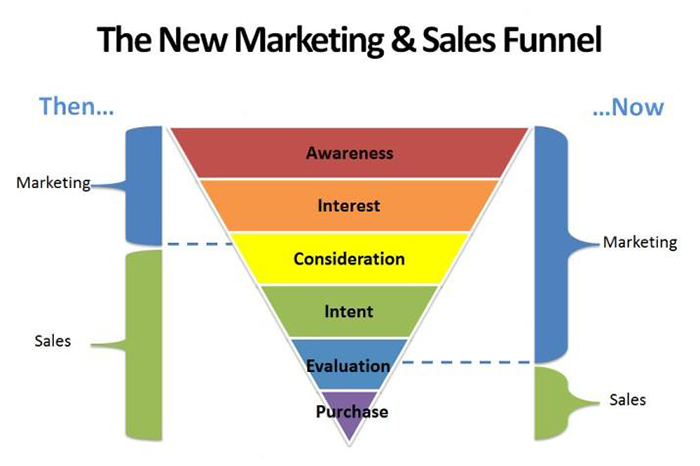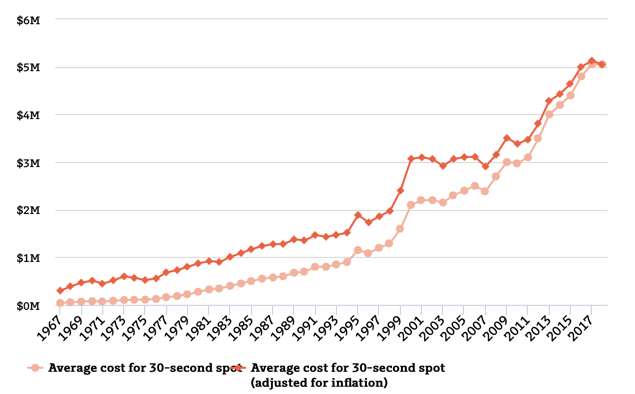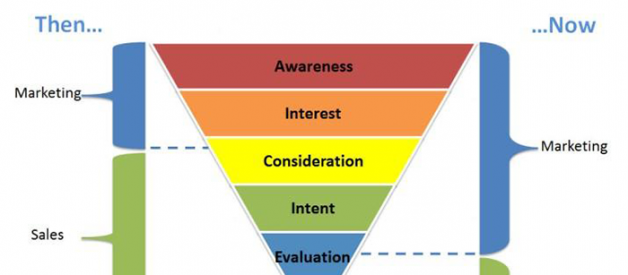Almost all businesses plan to increase their investment in at least one digital marketing channel in the next year. Many small businesses may not have properly budgeted out their marketing strategy. This article will help small businesses create their first marketing budget, focusing on what should be included and how to avoid some common mistakes.

For every business, marketing is essential to profitability and growth. Yet, according to the U.S. Small Business Administration, many small businesses don?t allocate enough money to marketing, or they spend their marketing dollars haphazardly.
More likely than not, small business owners lack experience developing and implementing a realistic marketing plan and budget.
A solid marketing budget is necessary for selling products and services.
Here are the 5 steps that a small business should follow to develop a marketing budget:
- Research your customers
- Match spending to revenue
- Make wise spending decisions
- Correct the course as needed
- Utilize best practices
This article will provide a step-by-step guide that can help a small business owner determine how much money to allocate to marketing, and how to spend it wisely.
1. Get to Know Your Customers
Before creating a marketing budget, a small business owner needs to know which channels to use to reach potential customers. This consideration requires a deep dive into your target audience to learn as much information as possible.
Some questions that you should be asking include:
- What is your target age group?
- What is your target income level?
- What is your target geographical area? Suburb? Big city? Rural area?
- What brands does your target audience interact with regularly?
All of this information can be accessed by researching your industry online.
Once you understand your potential customers, you can figure out how to best guide them through the sales funnel.

Building an effective marketing budget requires a deep dive into your sales funnel, where you?ll track results throughout the revenue cycle, from prospect to customer.
Here is the sales funnel data you will need to review to get a good grasp on your marketing needs:
- Number of site visits per month
- Number of leads generated per month
- Number of leads converted to sales qualified leads (SQLs)
- Cost to generate SQLs
- Number of leads converted into opportunities
- Number of opportunities that close as new deals
- Average value/revenue for a new deal
Harvesting this data from digital sources, such as a marketing automation platform or customer relationship management (CRM) software, can make this process relatively simple.
2. Base Your Budget on Revenue
Many businesses allocate a percentage of actual or projected gross revenues to marketing, usually between 3?5% for small businesses. But the correct allocation actually depends on several factors, including your industry sector, your business capacity, the amount of growth you can reasonably handle, and how quickly you need to make an impact.
For example, during the early brand-building years, retail businesses may look to spend up to 20% of sales on marketing in order to establish themselves in the marketplace.
A good rule of thumb for small businesses with revenues of less than $5 million is to spend 7?8% of revenues on marketing, with the budget split between:
- Brand development costs, including all the channels you use to promote your brand:
- Website
- Blogs
- Sales collateral
- Costs of promoting your business:
- Campaigns
- Advertising
- Events
Note that the 7?8% rule assumes that your business will have revenue margins of 10?12% after expenses, which will include your marketing budget.
If your business? margins are lower than 10?12%, you should consider lowering your overall margins and allocating additional spending to marketing. While this is a tough call for some business owners to make, you should not base your marketing budget on what?s ?left over? once all your other business expenses are covered.
3. Spend Your Budget Wisely
Knowing how much you have to spend on marketing is critical, but even more crucial is knowing exactly how to spend your marketing dollars. You need to have a plan.
Your small business marketing budget should be a component of your overall business plan, outlining the costs of how you are going to achieve your marketing goals within a certain timeframe.
In order to do that, though, you will need to research what these marketing components will cost.
Some marketing resources are available with no cost (e.g., ?free? low volume email marketing through a platform like MailChimp), but even free services eventually will need to be upgraded to a higher functioning platform, and that will come with a cost.
Small businesses may also look to advertise through digital platforms, such as Facebook and Google AdWords. In most cases, these platforms can be tailored for small businesses by adjusting your budget for each campaign.

For example, you can use Google Adwords? Keyword Planner to research the keywords your customers are using to search for you. The tool allows you to target by language, search engine, and location. You can then use these keyword ideas to try a Google Adwords campaign for increasing website traffic.
The great thing about social media ads is that you can experiment with them without spending too much money. Start small by promoting a tweet or boosting a Facebook or LinkedIn post to increase your reach without breaking your budget.
Once you have researched all of the marketing channels and determined an approximate cost for the year, you will need to re-examine your marketing plan as a whole. Can you afford to do everything you would like to do, or do you need to pull back in some areas to maximize your ROI?
Some costs can be fixed and recurring:
- A monthly subscription to email marketing services
- CRM software
- Website hosting fees
These fixed costs are easier to budget for since they don?t come as a surprise.
Other marketing expenses, like hiring a digital designer to create custom templates for your digital marketing endeavors, are sunk costs that will hit your budget all at once.
When trying to maximize or minimize spending, you should attempt to get as much ?bang for your buck? as possible by securing discounts.
For example, some software companies include a discount if you pay for a year up front. This cost hits your budget harder at the beginning, but it will have less of an impact over time.
Finally, most small business owners need to decide whether to outsource marketing activities, depending on the amount of staff and time you have available.
When considering whether or not to outsource, small businesses must decide what they have more of ? the time and expertise to handle tasks in-house, or the money to hire someone else? Many small businesses strive to find a balance between the two.
4. Test, Revisit, and Revise
Once you develop a marketing plan and budget, remember that it doesn?t have to be fixed. There may be times when you need to change things, such as running another campaign or event to capitalize on great timing.
Knowing whether your spending is actually helping you achieve your marketing goals is more important than sticking rigidly to a budget. After all, no marketing budget is carved in stone. A small business can test new areas and outlets, like social media advertising, and examine the results. You can, then, pivot based on the outcomes.
For example, businesses spent less than 10% of their marketing budgets on social media in 2017, but plan to spend nearly 20% by 2023.

The key is to constantly monitor your marketing efforts. If the platform is generating the ROI you need, then you can continue to invest that amount, or even increase it if you are able. If the platform is providing lackluster results, you can decrease or eliminate that cost and reinvest in what platforms are working.
However, some areas of your marketing plan, like content marketing, will not show a direct ROI because they focus more on branding than sales.
Have a plan in place for measuring your spending and the impact that activities have on your bottom line. Compare tactics and analyze the effects. Was one quarter more profitable than another? You will need to understand why in order to replicate that effect on your bottom line.
Above all, have the patience needed to follow through on your marketing efforts across the organization. Don?t give up too quickly, because it takes time and effort to build and grow a brand.
How often you revisit and maintain your marketing plans depends upon your willingness to focus on the short-term or long-term future. For instance, if you only review the plan on an annual basis, you may miss out on market landscape changes or seasonal business adjustments. However, looking at the marketing spend on a monthly or quarterly basis will not allow you to see bigger picture items, like industry trends or medium and long-term strategy.
A small business owner should trust his or her instincts. If you feel like something in your marketing plan is not working, you should move that spending into another area. There is no rule that says you have to stick to your marketing plan or budget for the entire year if the activities are not helping you achieve your business goals.
5. Follow the Leaders
You should thoroughly research and understand current and future marketing trends to better navigate the marketing budgeting process.
When setting a marketing budget, it is important to adopt different technologies and platforms to keep up with the pace of your industry sector. For example, if you use email marketing, take advantage of trending features such as contact insights, email tracking, and automated email scheduling.
Many times, small businesses will react to the ?next big thing? used by their competition without validation and research. Instead of blindly reacting to competitors? tactics, you should research if their new tactic will successfully reach your unique target market.
For example, your competitor may decide to advertise during the Super Bowl ? a traditionally expensive endeavor, even on the local level, as the following chart shows.

Still, just because the competition decides to spend all that money doesn?t mean that you should look to book time during next year?s ?big game.?
Rather, look at the sales trends that took place after that advertisement aired. Did you see a decrease in business? Did you notice more people visiting your competitor? Decide first if the competition?s strategy made an impact before following suit.
Your marketing budget needs to include traditional approaches as well as emerging platforms and tactics.
Getting Started
If you are not sure exactly what to try when creating a small business marketing budget, you can simply brainstorm ideas for productive ways to market your small business without breaking the bank. Start simple with your goals. Keep your audience in mind. Remember that there are countless platforms, channels, and marketing techniques that you can try.
Regardless of what some may tell you, there is no ?cookie cutter? formula for developing or spending your marketing budget. The main goals for your small business marketing endeavors should be to have fun, get creative, trust your instincts, and stay vigilant.
This article was originally published by The Manifest on October 18, 2018 and was written by David Oragui.


